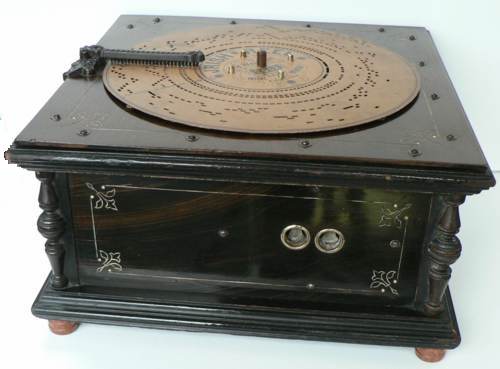
disk musical player
serial no. 156835

Ariston Organette My wife gave me this interesting music
machine as a Birthday present over 50 years ago. Unusually it came with
22
disks but sadly one of the reeds was broken and the bellows leaked so
it produced little music. The bellows were easy enough to make leak
proof but the one of the reeds was broken and it took a great deal of
work with a small file to manufacture another which vibrates but not
quite in tune! The original feet were missing and had been replaced
with cut down clothes pegs. More recently a friend made me four new
feet which I
believe are of the correct size and style. At some time in the past the
instrument had been inexpertly coated with an additional layer of
varnish which I have now removed with methylated spirits and a good
deal of rubbing finally finishing with "T-Cut" the incised decorations
were refilled with "goldfinger" manufactured by Rowney. Leipzig
Germany ca 1886
The Ariston here is a 24 note machine with interchangeable music titles
in the form of perforated hard cardboard disks with a diameter of 33 cm
was the most successful table barrel organ. Due to the much more
affordable price it offered many the first opportunity to own a small
music player for use at home. Several hundred thousand "Aristons" were
made between 1882 and about 1904 and the disk catalogue included more
than 5000 different song titles.
There are several variations, some have simple gold patterns others are
printed with old paintings but all 24 note instruments are
approximately 40 x 40 x 25 cm.
History
Leipzig music Werke AG 1880 -1904 (formerly Paul Ehrlich 1876-1880)
The invention of the punched tape control weaving looms 1801 by the
Frenchman, Joseph Marie Jacquard to automatically produce complex
patterns was not only the foundation for today's computer technology,
but also for the operation of automatic music machines. The first
patent for a punched tape controlled musical instrument was in 1847. In
the last quarter of the 19th century this principle saw the birth of a
flourishing industry in the production of mechanical musical
instruments. With this development, Leipzig, in particular the area
called Gohlis, became the world capital for the production of
mechanical musical instruments.
The most important and far largest producer for almost two decades
distributing its products all over the world was founded by Ernst Paul
Ehrlich (b1849 -1925) in Leipzig. By profession he was a musical
instrument maker. His patent of 1876 in for an instrument using punched
tape which he marketed as the "Orchestrionette" and in 1882 the
"Ariston" which used perforated cardboard discs (patent 277766). These
instruments used compressed air from a bellows to vibrate steel reeds
(similar to those in a harmonica). Levers operated by the holes in the
tape or disc divert air to the appropriate reeds. The drive was made by
a hand crank, which operated the bellows and moved the punched tape
and/or the perforated disk. The instrument was easy and straightforward
to use and tunes could be readily changed. This was the main advantage
of these instruments over the cylinder type with raised pins which were
common at this time (often of Swiss manufacture).
By 1885 over 700 workers were employed but the firm stuck to making the
"Ariston" and by 1895 was failing to keep abreast of the changes in
technology. Gradually production shifted to the construction of
mechanical pianos, orchestrions and phonographs until the firm went
into liquidation in 1904.More information can be found here:Music Museum
Leipzig
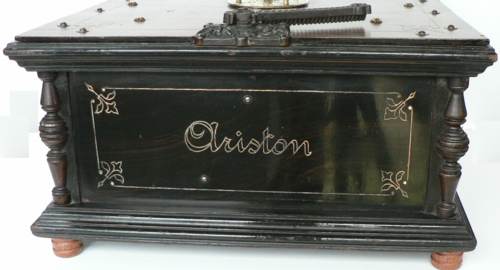
Side panel (The operating handle is on the opposite side)
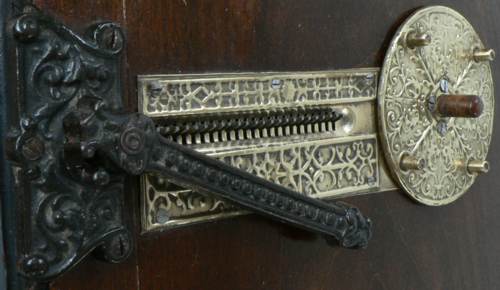
Drive wheel and peckers
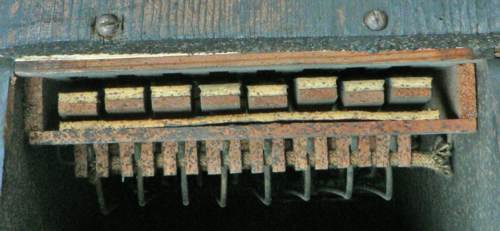
Underside showing the felt covered flaps
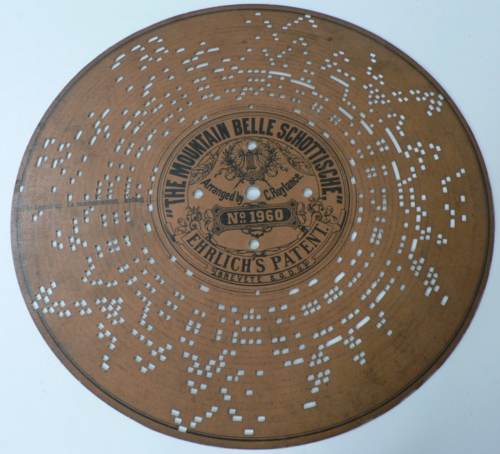
One of the perforated music disks
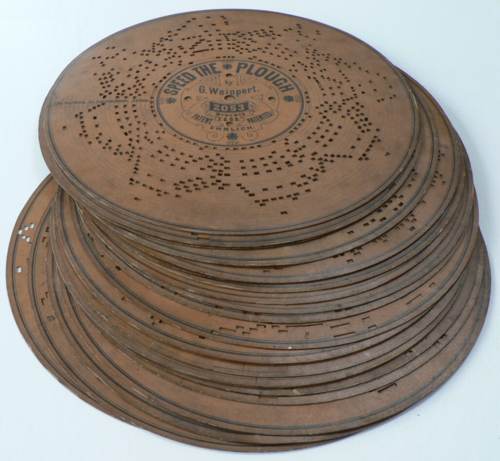
I have 22 such disks
How much is it worth? Maybe
£200-£300

